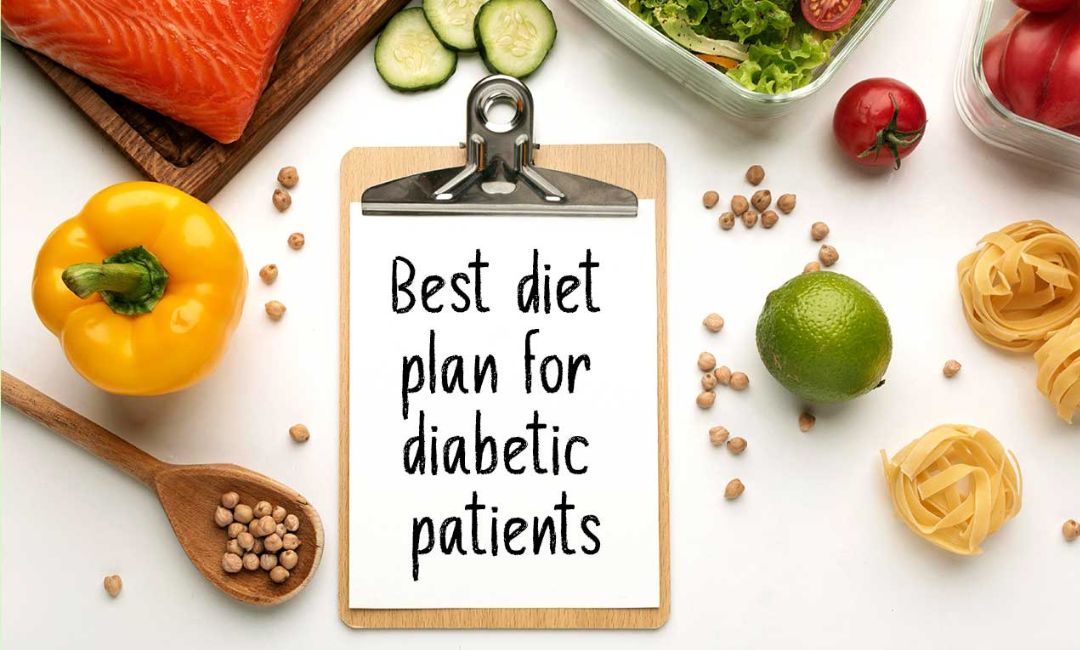Diabetes: the word sounds scary to many people. The first thing that comes to their mind is: No Sugar. Does diabetes actually have to be that scary? Is the no sugar statement only for refined sugar? Can a diabetic patient never recover? What is diabetes, and which dietary choices for diabetic patients are the best? Let’s learn together!
What is Diabetes?
The Diabetes represents a medical condition that makes your body unable to process sugar. Your body converts the food you eat, particularly sugary and starchy foods, into glucose, which functions as a sugar. The hormone insulin functions normally to transfer blood sugar into cells for energy use.
Type 2 diabetes causes insulin deficiency combined with insulin resistance in the body. Insulin ignites when sugar reaches high blood levels, yet it fails to create energy. High blood sugar levels eventually develop into dangerous medical conditions that cause exhaustion, distorted vision, nerve discomfort, and cardiac or renal dysfunction.
People with high blood sugar will experience exhaustion symptoms in combination with thirst and dizziness. When diabetic management is neglected, complications lead to substantial damage throughout the heart regions and kidneys, as well as ocular and additional internal body organs.
The good news? You can gain management skills over this medical condition, and food makes a significant difference. Your food consumption determines how your blood sugar reacts. A few strategic changes in your eating habits will help you feel better while improving your health status and enabling you to lead a happy life in full.
Blood sugar levels
For people without diabetes:
| Test Time | Normal Range |
| Fasting (before eating) | 70 – 99 mg/dL |
| 2 hours after eating (post-meal) | Less than 140 mg/dL |
| Random (any time of day) | Usually less than 140 mg/dL |
| HbA1c (3-month average) | Below 5.7% |
For people with diabetes:
| Test Time | Target Range |
| Fasting (before eating) | 80 – 130 mg/dL |
| 2 hours after eating (post-meal) | Less than 180 mg/dL |
| HbA1c (3-month average) | Below 7% (varies per person) |
Why Does Nutrition Matter?
Food influences your blood sugar levels to a greater degree than any other factor. Your body generates various changes after consuming any food. The selection of nutritious food represents the essential method to manage Type 2 diabetes effectively.
The right foods can help keep your blood sugar levels steady and improve energy. It supports a healthy weight, prevents complications, and boosts your mood. And the best part? You don’t need a fancy diet. Focused changes in your diet have substantial health benefits in diabetes management.
Understanding Carbs
Carbs aren’t bad. Individuals who have diabetes need to choose their food items cautiously.
The internal body processing converts every carbohydrate type into sugar. A single intake of carbohydrates leads to higher sugar production in your bloodstream. All various types of carbohydrates react differently within the human body systems.
The approach for differentiating carbohydrates consists of the following steps:
The prolonged stay time within the digestive system identifies slow carbs, which are also termed good carbs. Food items generate a stable release of blood sugars throughout the body system. Consumers should select whole grains and beans together with lentils and vegetables as their best carbohydrate choices.
The rapid rise in blood sugar results from the consumption of fast carbohydrates. Foods produced with white flour along with added sugar, such as bread, sweetened drinks, and candy products, regularly contain whole milk products, according to the list.
Smart tip: Always pair carbs with fiber or protein. It slows down sugar spikes.
The Power of Fiber
Fiber is your best friend. Accompanying sugar with digestion makes this nutritional substance break down more efficiently, as it eliminates blood sugar release.
Great sources of fiber include:
- Oats
- Berries
- Apples (with the skin!)
- Beans
- Nuts
- Leafy greens
Daily fiber intake needs to exceed 25–30 grams of fiber. A portion of oatmeal mixed with almonds provides your body with every requirement you need in a day.
Protein: The Blood Sugar Helper
Protein doesn’t raise blood sugar. Eating protein helps your body control blood sugar at a steady rate. Sufficient protein intake for your diet will improve muscle strength while assisting your weight management objectives.
Good protein sources are:
- Eggs
- Chicken
- Fish (like salmon or tuna)
- Tofu
- Greek yogurt
- Nuts and seeds
A tiny amount of protein should be added to each of your meals. It helps balance your plate.
Healthy Fats
Yes, fat can be healthy. You just need the right kind. Eating healthy fats provides two essential benefits to a diabetes patient by reducing inflammation while safeguarding the heart. Best sources include
- Avocados
- Olive oil
- Nuts
- Seeds
- Fatty fish
People with diabetes should avoid consuming fried or packaged snacks found in markets.
What About Sugar?
Diabetic patients do not require an absolute lifetime restriction on their sugar consumption. But moderation is key.
Here are some friendly swaps:
- Try fruit instead of candy
- Added extracts of vanilla and cinnamon serve as substitute flavoring agents when making coffee.
- Dark chocolate stands as an improved diabetes-safe food option compared to milk chocolate for patients with this medical condition.
- The water beverage you choose should have lemon and mint flavorings to serve as a substitute for soda beverages.
- Always check food labels. You must examine food packages to locate the sugar content within pasta sauce, yogurt, and bread items.
Snack Smart
Snacks are okay! The key role of these meals is to inhibit dangerous decreases in blood sugar levels. Eating snacks must contain three fundamental elements of protein, healthy fat, and fiber.
Some good ideas:
- Apple slices with peanut butter
- A boiled egg and a few almonds
- A small bowl of Greek yogurt with berries
- Carrot sticks with hummus
Watch the Portion Sizes
Regardless of nutritional condition, excessive consumption of any food leads to higher blood sugar levels. Blood sugar levels are directly influenced by portion control, which establishes this practice as the most important factor.
Use these tricks:
- Eat on smaller plates
- Read serving sizes on labels
- One must completely avoid eating food packages at all times
- Slow down and enjoy each bite
- Consumer contentment should mark the conclusion of your meal rather than overindulging
- Your total response depends on the amount you eat combined with your food choices.
Special Diets That Help
Particular eating methods lead to useful improvements in diabetes control. The Mediterranean Diet unites vegetables with fish while using olive oil and whole grains in its nutritional plan. The DASH eating pattern serves two purposes: heart protection and helping control diabetes symptoms. Your low-carb eating plan restricts all forms of refined carbohydrates, along with sugary foods in your diet.
Talk to a dietitian because radical dietary changes need a proper consultation before beginning. The dietitian will help you discover the best health plan that matches your requirements.
Food Journals Help!
Daily documentation of food consumption leads to extremely beneficial outcomes. Write down:
- What do you eat?
- How much?
- How do you feel afterward?
- Your blood sugar numbers
Over time, you’ll see patterns. Your recorded food data will reveal precise dietary patterns that work best for your system. The market provides various tracking applications that help users perform their monitoring tasks easily.
Conclusion
There is no need to be flawless when providing nutritional care for Type 2 diabetes patients. It’s about being aware. Small progressive modifications result in a better quality of life for your health needs. Choose real foods. Eat a variety. Watch your portions. Stay hydrated. Culminate your eating occasions with pleasurable moments. More detailed guidance and personalized support are available through expert consultations on Bear Goal’s GERD and Diabetes Nutrition Page and related resources.






